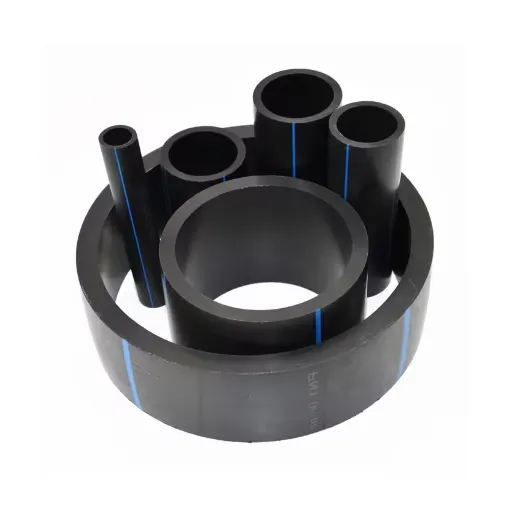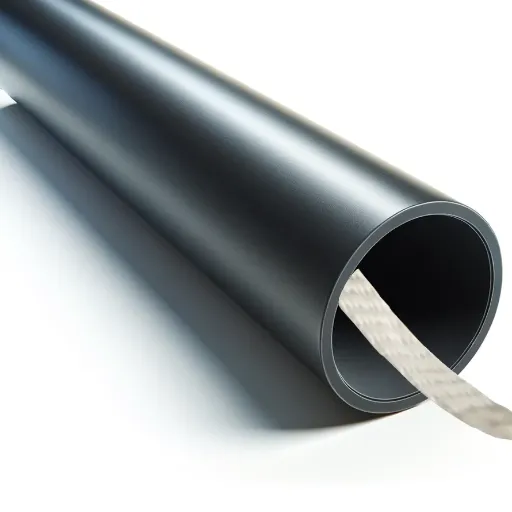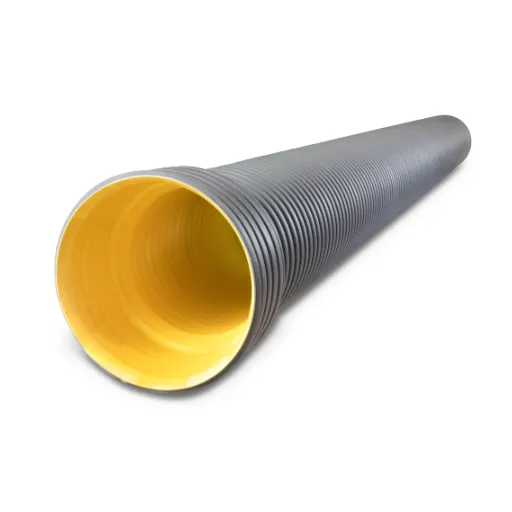High-Density Polyethylene (HDPE) pipes have become a cornerstone of modern infrastructure, revolutionizing industries ranging from water distribution to gas transportation. This guide is designed to provide a comprehensive understanding of HDPE pipe systems, exploring their unique properties, applications, and advantages over traditional piping materials. Whether you’re an engineer, contractor, or simply someone curious about innovative pipeline solutions, this article will serve as your go-to resource. From their durability and corrosion resistance to their role in sustainable development, HDPE pipes offer unparalleled benefits.
What is HDPE Pipe and How Does it Differ from Other Plastic Pipes?
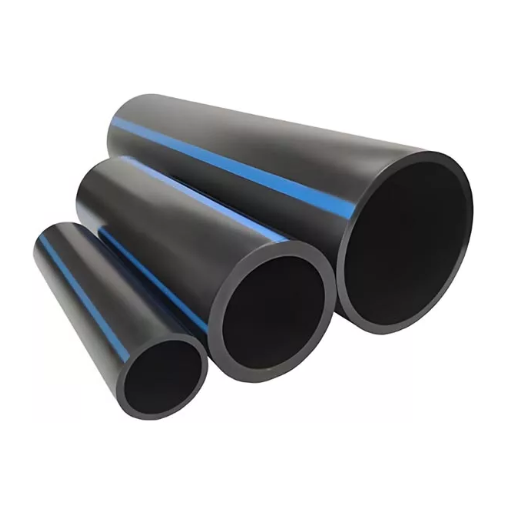
Introduction to HDPE Pipe: Composition and Characteristics
HDPE or High-Density Polyethylene pipes are forms of thermoplastic piping typically produced from polyethylene resins, a type of petroleum fossil fuel. HDPE’s attributes include the tensile strength (even in thin strips) and flexibility, and remarkable resistance to chemical corrosion as well as environmental stress. HDPE materials are treated with ethylene polymerization to yield a strong material with a high strength per unit density. These factors combined make HDPE useful in numerous industries, including municipal and agricultural ones.
Compared to other common plastic pipes, permeable HDPE pipes possess notably low permeability and resistance to chemicals. This characteristic allows permeability pipes to withstand harsh treating environments and aggressive substances without suffering much degradation. Additionally, HDPE plastic pipes can sustain exposure to extreme cold and extreme heat, making them versatile across numerous other regions. These factors, along with their resistance to fatigue cracking, ensure HDPE plastic pipes’ long-term reliability in punishing conditions.
The other marked benefit of HDPE pipes is the ease with which they can be installed as well as their ability to be fused without seams. Unlike older piping systems, which utilize joint seals, HDPE pipes can be attached through heat fusion methods, which creates a single continuous pipe free of weak points. This design minimizes the chances of leaks occurring while improving the overall structural strength, providing dependable functionality in pressure-sensitive operations such as gas distribution, water supply, and sewage systems. These key features combine to make HDPE pipes the preferred option in many industries demanding reliability, effortless performance, and reduced costs.
Comparing HDPE Pipe with PVC Pipe and Other Plastic Pipes
The attributes of High-Density Polyethylene (HDPE) pipes stand in notable contrast to those made of Polyvinyl Chloride (PVC) or any other type of plastic in plastic pipes, about material properties, longevity, and durability. One of these differences is flexibility. HDPE takes the lead in ductility and flexibility because it can bend under pressure and shift with the terrain without getting damaged. In comparison, PVC pipes are more rigid and less flexible when it comes to external forces, ground movement, or other factors, so they are more likely to crack or break in rough environments.
Another one of the major distinguishing benefits of HDPE pipes is how well they resist chemicals and environmental factors. HDPE is non-corrosive and has a very wide range of resistant chemicals, therefore making it ideal for aggressive substances or harsh environmental conditions. PVC pipes do have some level of chemical resistance as well, but they do not hold up as well under extreme temperatures or prolonged exposure to UV light compared to PVC. In addition, HDPE pipes are superior to other plastic pipes when it comes to lifespan, as they often exceed 50 years.
Finally, HDPE pipes surpass all other plastic pipes in joint integrity. HDPE pipe joints can be fused using a seam fusion technique, which makes the joint connection both seamless and leakproof. This method guarantees that the pipeline retains its integrity under pressure in critical applications. In contrast, PVC and other pipes use mechanical or solvent types of joints, which are prone to leaks over time. Therefore, for industries where service life, dependability, and efficiency are paramount, HDPE becomes the pipe of choice.
Why Choose HDPE Over Traditional Metal Pipes?
The traditional ways of piping using metal pipes have been replaced with durable, westernized, and cost-effective HDPE pipes. This is because HDPE pipes do not rust and corrode like metals do when exposed to moisture and chemicals, which makes them ideal for long-term installation. Additionally, the versatility and durability of HDPE make it suitable for wastewater systems as it encounters corrosive substances constantly.
Not only are HDPE pipes cost-effective, but they’re also lightweight, unlike a metal pipe, which makes them bulky. Compared to metal-made pipes, HDPE allows smoother transportation, reducing the amount of fuel burned. During an earthquake or land shifting, HDPE pipes bend, which prevents damage, unlike rigid metal pipes, reducing maintenance costs drastically.
Repairing and maintaining HDPE pipes is significantly less than both metal and plastic alternatives due to their smooth interiors, which in turn lessen energy cost, proving that HDPE pipes are the best option for industries focusing on conservation, productivity, and dependability.
What Are the Key Benefits of Using Polyethylene Pipe in Pipeline Systems?
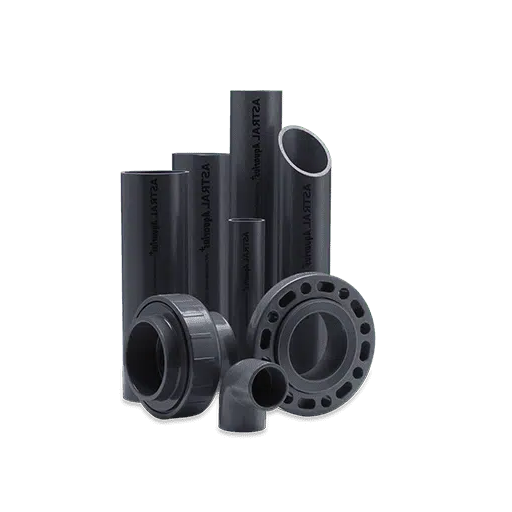
Durability and Strength: How HDPE Pipe Stands the Test of Time
High-density polyethylene (HDPE) pipe is considered one of the toughest and resilient materials for a pipeline structure, as it can endure an array of challenging conditions. Its flexibility aids in resisting multidisciplinary stress levels due to the external loads, shifts in the ground, and thermal expansion, all while maintaining its structural soundness. Unlike rigid materials, HDPE can bend without breaking, thus drastically mitigating the risk of joint failure or cracking.
Moreover, HDPE pipes are also known to have a long-lasting performance even in very harsh environments where they could face chemical corrosion, UV abrasion, and extreme abrasion that other materials would be useless and have their outer layer stripped off and destroyed. Research proves that these specially engineered pipes with precision can work for more than half a century under the right conditions, outperforming steel and concrete pipes. It’s HDPE’s unmatched strength is also honed down to ultra-high demanding applications such as high-pressure piping systems and highly volatile temperatures.
Such unmatched durability underlines the solution’s infrastructure value where long-term performance is key, as it minimizes repairs and replacements, both in frequency and costs. Adopting HDPE pipes translates to an evolved and future-oriented strategy for municipalities, industries, and utilities concerned with efficient, sustainable growth.
Corrosion Resistance: A Major Advantage of PE Pipes
About piping systems, one of the most important benefits of polyethylene (PE) pipes is their extraordinary ability to resist corrosion. PE pipes virtually eliminate the risk of corrosion, pitting, and chemical damage from aggressive substances such as acidic and alkaline soils, saline water, or even harsh industrial chemicals. Unlike conventional materials like ductile iron or steel, PE pipes do not rust. Such intrinsic resistance to environmental and chemical factors drastically lessens the need for external protective coatings and cathodic protection systems, thus considerably saving the cost of long-term maintenance and installation after the initial expense.
Furthermore, the molecular structure of PE material guarantees resistance to surface corrosion as well as internal decay from the medium being transported. This trait proves beneficial for wastewater, saline solution, or reactive chemical transport applications where other materials used for pipes would perish over time. Research shows that under optimal operating conditions, PE pipes are capable of achieving over 50 years of service life, thus reinforcing the claim for PE pipes as an unparalleled solution for infrastructural demand.
This type of corrosion resistance directly contributes to further enhanced operational efficiency and reduced downtime in various industries. The characteristics of PE pipes correspond almost perfectly with sustainability policies concerning the environmental impact of repairs and replacements. Therefore, the installation of PE piping systems can be regarded as a sustainable and strategic long-term investment for water distribution networks, industrial uses, and irrigation systems, along with providing durability, reliability, and value.
Cost-Effectiveness in Long-term Pipeline Maintenance
In assessing the cost and efficiency of pipeline upkeep, both the upfront PE piping system investment and the operational lifecycle costs of the plant should be computed. PE pipes are durable and require little maintenance when compared to older materials like metal or concrete, so their operational costs over the lifetime of the system are favorable. Because of their resistance to corrosion, fatigue, and chemical degradation, PE piping demonstrates exceptional durability in various environmental conditions, thus reducing the frequency and expense of repairs and replacements over time.
Additionally, advances in HDD and other trenchless installation methods, such as pipe bursting, reduce cost further by limiting the need for excavation and associated labor. Moreover, the reduced disturbance to local infrastructure translates into lower societal costs and faster project completion. Research shows that the long-term financial benefits of PE piping solutions offset the more expensive upfront costs of materials, especially in municipal water distribution and industrial fluid transport.
Having regard to operations, the internal surface of PE pipes being smooth aids in having lower energy costs for fluid transport since it minimizes frictional losses. This, consequently, reduces the power needed for pumping and energy costs, emphasizing its benefits as a sustainable, economical option for infrastructure planning intended for the long term.
How is HDPE Pipe Used in Water Supply and Drinking Water Applications?
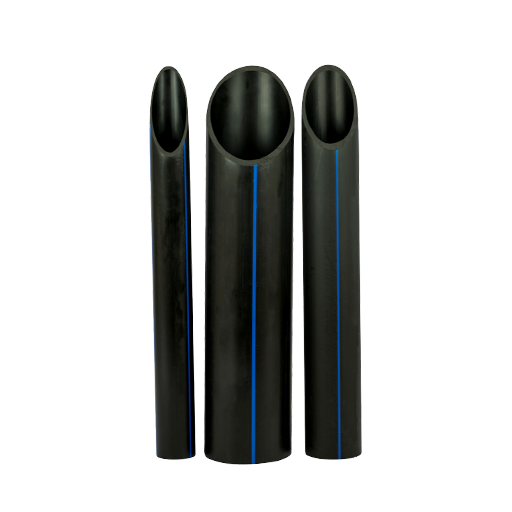
Ensuring Safe Drinking Water with Polyethylene Pipe
Modern water supply systems incorporate High-Density Polyethylene (HDPE) pipes as a fundamental part. They offer superior performance about maintaining the safety and purity of drinking water. One of the most advantageous properties of HDPE is its chemical resistance, meaning that no leaching of harmful substances takes place even when soil conditions are aggressive or disinfectants, such as chlorine, are used. Additionally, these pipes are non-corrosive, meaning that they do not degrade or rust over time, and can therefore be used in long-term water distribution networks.
Polyethylene pipes also have the advantage of retaining a joint seal. HDPE, through processes of electrofusion or butt welding, achieves monolithic systems with no leaks which severely reduces the chances of contamination or water loss. These joints far exceed old mechanical connections, which would experience significant wear and become unreliable due to leaks over time.
In terms of practicality, HDPE pipes are superior due to their flexibility and lightweight, which allows for use in a variety of settings, including urban areas as well as trenchless installations. They also withstand extreme temperatures and pressure without cracking, making them reliable for complex water supply systems. These pipes are estimated to last up to 100 years under optimal conditions, making them a viable solution for water infrastructure.
HDPE pipe systems have outstanding environmental efficiency and cost effectiveness because of their efficient manufacturing energy uses and lower material requirements, which results in a decreased carbon footprint during production. These features support international goals for water management and infrastructure development, strengthening their primary option status for safe drinking water delivery systems.
The Role of HDPE in Water Mains and Potable Water Systems
The introduction of High-Density Polyethylene (HDPE) in contemporary water distribution systems is a result of its unrivaled strength, affordability, and eco-friendliness. HDPE pipes are non-corrosive and chemical resistant, and also have a high tolerance for extreme temperature shifts, making them suitable for potable water systems. An additional primary benefit is their capacity to absorb surge pressure and resist fatigue, ensuring operational life extension even with dynamic pressures over time.
More recent research suggests that minimal maintenance HDPE materials can last well over 50-100 years, drastically reducing lifecycle costs in comparison to older materials like cast iron or PVC. Moreover, HDPE pipe joints are usually assembled by means of heat fusion, forming a single-piece, monolithic, and completely leak-proof system. This process removes the uncertainty of joint integrity and effectively eliminates the possibility of water loss through pipe deterioration or joint failures due to non-contractible seams.
Analyzing global water distribution systems highlights the need for leak-free infrastructure, as poorly maintained systems can account for nearly 30% of water loss from aging pipes. HDPE’s seamless connections eliminate these deficiencies while simultaneously adhering to worldwide standards for responsible water conservation. The smooth internal surface of the material also reduces operating energy requirements of water pumping systems, further improving sustainability by lessening friction losses.
Innovations in the field of HDPE manufacturing also include options such as installation using trenchless methods. Such approaches lessen costs associated with installation, as well as limit the impact on the environment, which is especially beneficial in built-up areas due to the difficulty of excavation. The ability of HDPE to adapt swiftly to new and evolving infrastructure needs makes it a strategically vital component of modern water mains and potable water systems; it is enduring and protects against future infrastructure uncertainties.
Benefits of HDPE Pipe in Water Applications and Irrigation
High-Density Polyethylene (HDPE) pipes are widely accepted as some of the most durable and efficient options available for water transportation and irrigation systems. The first advantage causes a great lifespan alongside reliability and strength when used with water and irrigation systems. In comparison to components made of metals or concrete, HDPE is far better in terms of cost efficiency, spanning usage and materials over time.
In addition, the flexibility and impact resistance are also enhanced, enabling the pipes to endure geothermal stress, soil movement, shifts in moisture levels and temperature, and even harsh weather, enabling their long-term usefulness in a wide array of climates and regions. Moreover, the seamless construction along with leak-free joints ensures minimal water loss, a crucial component towards boosting the system’s efficacy and conserving water and resources in irrigation and distribution networks.
Furthermore, this quality becomes even more critical in systems with pressure, as it needs less energy to pump water, directly resulting in reduced operational costs. This factor, along with minimum friction damage, ensures optimal flow rates, which increase the built-in hydraulic efficiency of the system.
Moreover, HDPE pipes have a low environmental impact because their energy and raw material expenditures during manufacturing are lower than those of other traditional piping materials. Their recyclability, along with other features, such as the incorporation of slope trenchless techniques for installation, minimizes additional economic and environmental impact during HDPE pipe servicing and installation. All these properties combined make HDPE pipes the top option for sustainable water management and irrigation infrastructure.
What environmental factors affect polyethylene pipes, and how can they be managed?
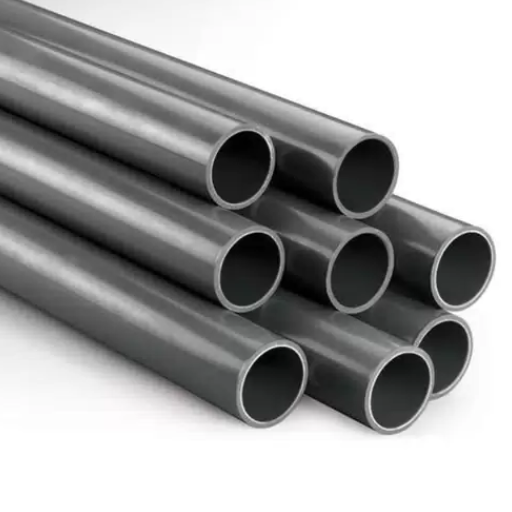
Understanding Environmental Factors and Their Impact on HDPE Pipe
While high-density polyethylene (HDPE) pipes are strong and flexible, they do require care as certain environmental considerations can affect their life expectancy and overall performance. It is important to manage these stress factors to preserve system integrity and operational effectiveness.
- Ultraviolet (UV) Radiation: Sunlight is one of the contributing factors that can be harmful to HDPE pipes because they are bound to alter their molecular structure, especially when UV stabilizers are not integrated into the compounding stage. PP exposed to unprotected UV radiation undergoes oxidation, which induces surface cracking and reduction of the mechanical strength. Outer UV-protected pipes need to be compounded with carbon black resistant to UV radiation, or need to be installed underground or shielded to protect from UV degradation.
- Temperature Extremes: Outside temperatures that are too low or surge can alter the thermoplastic behaviors of HDPE due to its properties. Higher temperatures can soften the pipe, which lowers the pipe’s stiffness and pressure rating, while lower temperature increases the risk of impact brittleness. This can be mitigated by using a higher temperature resistance HDPE grade or pressure de-rating on the pipe system based on temperature bounds.
- Exposure to Chemicals: During operation, particularly in industrial and agricultural contexts, HDPE pipes can encounter a variety of chemicals. The material is susceptible to strong oxidizing agents and hydrocarbons by chemical permeation or stress cracking. To resolve this, the chemical compatibility of HDPE with the transported medium must be assessed, and custom pipe grades might be employed for environments with aggressive chemicals.
- Surge and Hydrostatic Pressure: Long-term internal dynamic pressure exposure, such as effects from water hammer, can result in stress fatigue or instantaneous mechanical failure. System design featuring pressure-relief and surge-absorbing fittings ameliorates these concerns.
- Environmental and Biological Interactions: Certain surroundings of HDPE pipes may harbor microorganisms of interest, some of which may be capable of biofilm or acid production, which acts on the pipe surface. Also, the soil surrounding pipes that are in the ground has mechanical factors such as moisture, temperature, and acidity, which affect the longevity of the pipe. These risks in high-risk zones are managed with protective coatings or systems using regular mitigation surveillance.
Critical design changes to address unique environmental considerations, along with site-specific detailed assessments, greatly improve the reliability and durability of HDPE pipe systems. Modern installations of HDPE utilize advanced materials and consider specific site conditions to be cost-effective, efficient, and to maximize service life across a wide range of applications.
Resistance to UV and Other Environmental Factors in HDPE Piping Systems
High-density polyethylene (HDPE) piping systems display incredible resistance to environmental factors, including ultraviolet (UV) radiation, making them useful for outdoor applications. HDPE pipes do not require additional treatment since it is already UV-stabilized due to the incorporation of carbon black. Research indicates that HDPE pipes with carbon black of roughly 2-2.5% by weight retain their strength and functionality after years of exposure to direct sunlight.
Furthermore, HDPE pipes are designed to endure extreme weather, temperature variation, chemicals, and abrasive soil, which is crucial in several industrial and municipal applications. Laboratory and field tests confirm that HDPE retains its properties over a broad spectrum of temperatures and, more importantly, between -40°F and 140°F while exhibiting minimal stress-cracking under thermal and mechanical loads.
In addition, the material’s non-corrosive nature makes sure that HDPE piping systems do not degrade when exposed to acids and bases, unlike traditional materials like metal and concrete piping. All of these factors cooperate in sustaining HDPE piping systems, ensuring high reliability and performance with little maintenance throughout their lifetime.
Managing Impact Resistance and Thermal Conductivity in Various Conditions
High-Density Polyethylene (HDPE) is designed to have exceptional impact strength and thermal conductivity within a wide range of temperatures, making it adaptable in hypersensitive environments. The molecular configuration of HDPE contains properties of elastomeric materials, which means it can absorb and dissipate energy efficiently and adequately during sudden impacts, like those encountered in construction, pipeline installation, and transportation. Its ability to resist cracking and splitting under mechanical stress is a direct consequence of its polymeric structure, which is optimized during manufacturing.
The selection of materials with adequate HDPE for use in fluctuating temperature environments must have thermal conductivity. One of its critical drawbacks is low thermal conductivity, which has a value of approximately 0.41 W/(m·K). Heat transfer is weakened, which improves the overall functionality for thermally insulating applications, making it suitable for pipelines transferring substances sensitive to temperature. In addition, HDPE’s operational temperature range is between -40°F to 140°F (-40°C to 60°C), which provides endurance when exposed to freezing temperatures and extreme heat without significant deformation or deterioration of material properties.
The ability of HDPE to withstand extreme temperatures or impacts is sustained because of increased production methods. Newer innovations like bimodal polyethylene resins increase the mechanical properties of the material while still being flexible alongside its ease of handling, further improving the material’s density distribution. Because of these factors, HDPE continues to be the best option for industries that value durability and HDPE’s longevity impacts on the environment and operational costs.
How Does the Installation and Joining Process Work for HDPE Pipe?
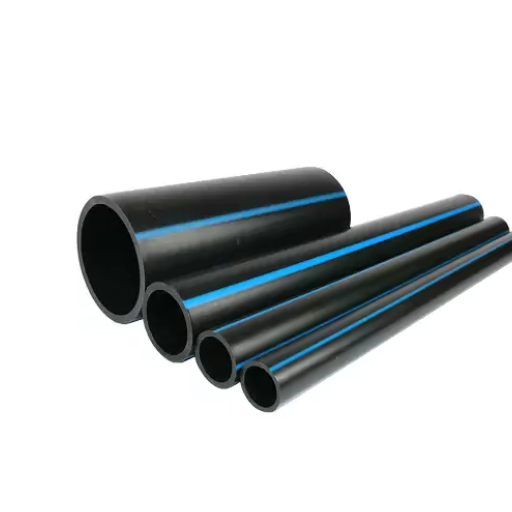
Weld and Heat Fusion: Techniques for Leak-Free Pipe Systems
The joining and installation procedures for HDPE pipes use primarily weld and heat fusion methods, which are intended to produce strong, leak-proof connections. These techniques require the melting of pipe ends, and the subsequent fusing of the pipe ends is called a joint or weld. With proper care, the joint will be as strong as the base material. Thermal fusion works best for long-term applications and performs well under high pressure and externally applied forces, making it useful for a water supply system, gas pipelines, or industrial uses.
There are two main fusion methods used on HDPE pipes, and these are butt and electrofusion. In butt fusion, both ends of the pipe are brought together and a flat heating plate is used to melt the surfaces before them being forced to stick. This method is beneficial when working with pipes of the same size and is also good for large-bore systems. Electrofusion involves using special fittings that have resistance wires, which heat the joint area directly. Because of this, the method can be used in places where the space is extremely limited, and pipes of different sizes and orientations can easily be connected.
Ultrasonic Inspection as a Nondestructive Testing (NDT) method should be carried out by the operators to check the integrity of the joints after installation. A combination of these modern methodologies with strict quality control ensures that the HDPE piping systems have optimally minimal chances of failure while maximizing their safety and serviceability.
Using Electrofusion and Polyethylene Fittings for Secure Joints
Electrofusion technology has a precise method for welding polyethylene pipes and fittings using electrical heating elements positioned within the fitting to make a strong, leak-proof bond. The process guarantees uniform strength by controlling temperature, pressure, and alignment during the welding process, which needs to be balanced. The polyethylene fittings are manufactured to a specific material grade and size of the piping system, so there is no compromise on compatibility.
The versatility of electrofusion welding, especially its usability in tight locations, is one of its primary benefits. Moreover, the absence of open flames greatly increases safety during installation. Properly executed electrofusion joints have been shown through field studies and other research to far exceed standards set by regulatory bodies and industry standards.
To guarantee optimum reliability, operators must use fittings and apparatus from leading manufacturers as well as undertake appropriate training and strict compliance with all welding instructions. In addition, the utilization of data logging systems during the fusion process allows for the capture and storage of key metrics, which improves quality control and auditability throughout the life of the piping system.
Advantages of HDPE Pipe in Sewage and Drainage Applications
High-Density Polyethylene (HDPE) pipes are useful in sewage and drainage systems because of their chemical resistance and ease of installation. Another important advantage is their remarkable abrasion and corrosion resistance, which benefits the transportation of aggressive wastewaters and other effluents. In addition, HDPE pipes endure extreme temperatures, chemicals, and a wide range of pH levels, proving their dependability where other materials like metal or concrete would fail.
Moreover, HDPE pipes are extremely flexible in addition to being tough, which enables them to flow with external pressures or movement like settlements and earthquakes. This characteristic is critical in relieving strain in overly dynamic soil conditions where pipe stress would be detrimental. In addition, the smooth interior surfaces of HDPE pipes result in lower friction losses, which improve hydraulic efficiency and prevent clogging while transporting fluids containing solids.
Considering sustainability, HDPE pipes have a lesser environmental impact when compared to traditional piping systems. Their light structure also decreases transportation and handling expenses, while the material’s ability to be recycled promotes responsible waste management. All these features make HDPE piping systems economical and durable for use in sewage and drainage systems in cities, industries, and even rural developments.
References
Frequently Asked Questions (FAQ)
Q: What is an HDPE pipe?
A: HDPE pipe is a type of plastic pipe made from high-density polyethylene, a polymer known for its strength and durability. It is commonly used in various applications, including transporting drinking water, industrial water, and other fluids and gases.
Q: How is HDPE pipe used as a conduit?
A: HDPE pipe is often used as a conduit because of its excellent resistance to environmental factors, making it suitable for protecting cables and other sensitive materials. Its flexibility and fewer fitting requirements make it ideal for long-distance installations.
Q: What are the benefits of using HDPE pipe for drainage systems?
A: HDPE pipes are widely used for drainage systems due to their resistance to chemicals and environmental factors, high strength-to-density ratio, and ability to withstand impact. They are also lightweight and easy to install compared to concrete or steel alternatives.
Q: How does HDPE pipe compare to iron pipe size systems?
A: HDPE pipes have an advantage over traditional iron pipe size systems due to their resistance to many chemicals and lower risk of corrosion. They also offer flexibility and fewer joining requirements, which can reduce installation time and costs.
Q: What is the extrusion process in HDPE pipe manufacturing?
A: Extrusion is the process used to create HDPE pipes, where polyethylene is heated and pushed through a die to form the desired pipe shape. This process ensures uniformity and consistency in the pipe’s dimensions and properties.
Q: Why is HDPE pipe chosen for industrial water systems?
A: HDPE pipe is often chosen for industrial water systems because it is resistant to chemicals, has high impact resistance, and offers strength and durability. It is capable of handling high-pressure applications and transporting fluids efficiently.
Q: Can HDPE pipes be used for slurry transfer lines?
A: Yes, HDPE pipes are suitable for slurry transfer lines due to their resistance to abrasion and chemicals, as well as their ability to handle the high-pressure demands of slurry transport.
Q: What role does the monomer play in the production of polyethylene pipes?
A: The monomer, ethylene, is the basic building block in the production of polyethylene pipes. During polymerization, ethylene molecules link together to form long chains, creating the polyethylene polymer that is used to manufacture HDPE pipes.
Q: How do seals or jointing methods affect the design and installation of HDPE pipes?
A: Seals or jointing methods, such as heat fusion or mechanical fittings, are crucial in HDPE pipe design and installation. They ensure leak-proof connections and contribute to the overall integrity and performance of the pipe system.
Q: What are the common sizes available for HDPE pipes?
A: HDPE pipes are available in various sizes, including iron pipe size (IPS) and copper tube size (CTS), allowing them to be used in a wide range of applications and easily integrated into existing systems.




